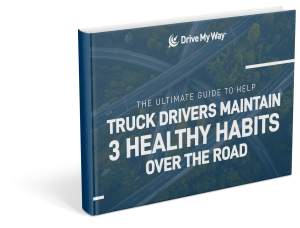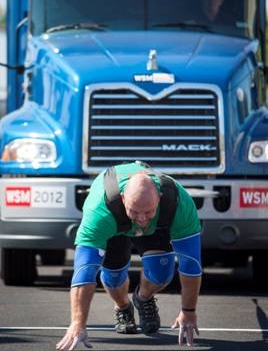
Every season comes with its own unique truck driving challenges and considerations.
Summer is no exception, with the annual increase of vacation traffic, intense weather conditions, and safety concerns.
From overheating engines to sun glare and dehydration, keep reading to find out some of the best tips to staying cool and driving safely this summer.
What Makes Summer Trucking Different?
Understanding what makes summer driving conditions different from the rest of the year is key to being prepared and staying safe all season long.
Increased traffic is one of the main causes of accidents and safety concerns during the summer months. With more drivers on the roads, including family vacationers and teens with summer jobs, the risk of accidents rises. Be especially vigilant for potentially inexperienced drivers, such as those with out-of-state license plates, as well as RVs or cars towing trailers.
Construction projects also increase in frequency during the summer, leading to traffic congestion and accidents. It’s important to stay alert in construction zones and be aware of changing traffic patterns to avoid fines and ensure safety. Keep an eye out for reduced speed limits, lane shifts, and workers on the road, and always follow posted signs and signals.
Changing weather conditions are likely the first thing that comes to mind when summer begins. However, it’s crucial to also consider the significant impact this can have on driving. High temperatures can affect both drivers and vehicles, and these concerns should be taken seriously throughout the season. Additionally, summer marks the start of hurricane and tornado seasons, which can bring severe weather and challenging driving conditions.
Tips for Summer Safety
Taking all of these unique conditions into account, here are some important tips to consider before getting behind the wheel this summer.
Plan ahead.
With more drivers on the road and an increase in unsafe conditions, it’s important to minimize risks and save time whenever possible. Use data-driven websites and mobile apps to plan routes that avoid predicted traffic, construction zones, and popular vacation spots.
Be sure to keep an eye on the weather forecasts as well, checking for chances of major storms or heavy flooding. Have a backup plan prepared in case of inclement weather, and don’t be afraid to pull off and let a storm pass. It’s always better to lose a few minutes than put yourself at risk by driving in dangerous conditions.
Take care of yourself.
Even if your truck has AC, you aren’t immune to the potentially dangerous effects of summer heat. Hydration is important year round, but it becomes even more crucial during the summer months when you sweat more often. Incorporate hydrating foods like watermelon, strawberries, and cucumbers into your diet to replenish your body.
Sunscreen is another summer essential, as UV rays can penetrate truck windows. Applying sunscreen daily will greatly reduce your risk of skin cancer. Additionally, protect your eyes with sunglasses or a hat to lower the chances of serious problems like cataracts.
Take care of your truck.
Heat isn’t just potentially dangerous for people, it can also have a significant impact on vehicles.
Summer heat can lead to tire blowouts, so it’s crucial to monitor your tire pressure regularly. Idling engines can overheat, making it important to keep an eye on coolant levels. High temperatures can also cause brake fading, reducing friction and braking efficiency, so inspect your brakes frequently. Additionally, maintaining a clean windshield is essential for better visibility, especially with increased sun glare. Paying close attention to these pre-trip inspection items can help you navigate summer disruptions more smoothly.
Be patient.
The real key to safe driving in the summer is patience. Allot extra time for every run, since traffic patterns and weather conditions can be especially unpredictable during the summer months. Drive slow in construction zones, and be cautious and defensive in areas likely to be full of tourists. Remember to always stay calm and manage stress by taking breaks when needed.
For more information on trucking jobs and industry tips and tricks, be sure to read the rest of our Truck Driver blog posts and connect with us on social media.




 Working out on the road is much easier said than done. Trucking isn’t a 9-5 job where you can find ample time to exercise during the evenings and on weekends. Truckers are out on the road for days,
Working out on the road is much easier said than done. Trucking isn’t a 9-5 job where you can find ample time to exercise during the evenings and on weekends. Truckers are out on the road for days,  Becoming a master of your own body weight is one of the best feelings out there. These exercises center around using either no equipment or the equipment around you (or on your truck) for support.
Becoming a master of your own body weight is one of the best feelings out there. These exercises center around using either no equipment or the equipment around you (or on your truck) for support.  While bodyweight exercises are great, keeping a bit of spare room in your cab for some light exercise equipment will give you a whole new range of workouts to do.
While bodyweight exercises are great, keeping a bit of spare room in your cab for some light exercise equipment will give you a whole new range of workouts to do.  While most of the exercises you’ll see for truck drivers center around things you can do with your own bodyweight or equipment that can fit in your cab, it’s easier than you think to find a gym if you really want it.
While most of the exercises you’ll see for truck drivers center around things you can do with your own bodyweight or equipment that can fit in your cab, it’s easier than you think to find a gym if you really want it.  If you’re really looking to change your lifestyle and get in better shape, you can’t overstate the role healthy eating plays. You can have the best workout regimen around, but if you’re still eating poorly, getting fit is going to be an even bigger uphill battle.
If you’re really looking to change your lifestyle and get in better shape, you can’t overstate the role healthy eating plays. You can have the best workout regimen around, but if you’re still eating poorly, getting fit is going to be an even bigger uphill battle. 





 “I tell new drivers to sleep at
“I tell new drivers to sleep at 





 Tip 5: Protein, first thing in the AM
Tip 5: Protein, first thing in the AM
